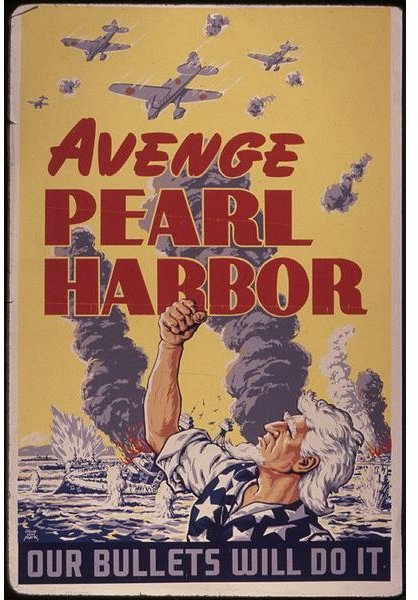Events Leading Up to the Attack on Pearl Harbor: 5 Important Facts
A Date Which Will Live in Infamy
**
“Remember Pearl Harbor!” was a rallying cry during WWII. It served to remind Americans of the surprise attack on the U.S. naval base in Hawaii and united the nation behind the war effort and a quest for revenge. Japan’s desire for new territory, along with American blunder help pave the path to the U.S. involvement in the greatest human conflict in history. These five facts about the attack on Pearl Harbor explain how the attack led to America’s involvement in World War II.
1. Japan was taking advantage of the turmoil in Europe for its own agenda of furthering its empire in the Pacific. President Roosevelt strongly condemned the Japanese assault on China and ended a long-standing commercial treaty with Japan. Japan continued their drive and seized the capital of Vietnam, a French colony. When Japan still disregarded Roosevelt’s stern warnings, all Japanese assets in the U.S. were frozen and a complete trade embargo was established. This embargo severely limited Japan’s access to crucial war supplies.
2. In 1940, Japan signed the Tripartite Pact with European Axis powers, Germany and Italy. Japan formed an alliance with the Axis powers; however, a strong relationship never grew and the conflicts in the Pacific and Europe remained separate.
3. There were Some Signs an Attack was Eminent: Misunderstanding and miscalculation caused officials to overlook signs that Japan intended a direct attack on American forces. American Intelligence broke Japanese codes but misunderstood the intent of the Japanese messages. Decoded messages made it clear that an attack would come in a matter of days after November 29, but the place of attack was not clear. Most officials were convinced Japan would move against British or Dutch possessions to the south. American Intelligence noted a fleet of Japanese ships sailing in the general direction of Hawaii but was more concerned with a large Japanese convoy moving toward the China Sea. Partly because of the vast distance between Hawaii and Japan, few officials believed an attack was possible on American territory.
4. Pearl Harbor is attacked. At 7:55 am on Sunday, December 7, 1941 a wave of Japanese bombers attacked the United States naval base at Pearl Harbor. A second wave struck an hour later. The planes were launched from aircraft carriers hundreds of miles away. Over 2000 soldiers, sailors, and civilians died and another 1000 were injured. The U.S. lost 8 battleships, 3 cruisers, 4 other vessels, 188 airplanes, and several vital shore installations. Japanese naval and air forces suffered only light losses.
5. America declares war. On December 8, President Roosevelt grimly addressed a joint session of Congress. His famous speech began, “Yesterday, December 7, 1941 - a date which will live in infamy.” Within four hours, a declaration of war against the Empire of Japan was approved. The Senate voted unanimously for war and the House returned a vote of 388 to 1. On December 11, Japan’s allies, Germany and Italy, declared war on the U.S. Congress responded on the same day with a unanimous vote declaring war on the Axis powers.
These facts tell the story of how the surprise attack sent America into the greatest human conflict in world history.
References
- Source – Brinkley, Alan. American History, A Survey Vol. II: Since 1865. Chapter 27. Boston: McGraw Hill, 2007.
- Image credit - Wikimedia Commons/ National Archives and Records Administration
